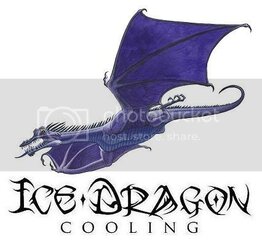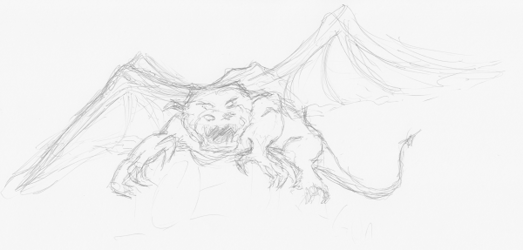been a while since I posted anything here, but I have been doing some tests on our nanofluid and here is some preliminary results:
I have been working on some of my own tests of the nanofluid downstairs in my basement. I only have these results to show. I will try to upload some pictures of some of the test equipment soon. I am using a program called LabView to record my temperatures. I have a thermocouple readers made by National Instruments (Ni) that plug into my USB. I have four thermocouples per computer. I have one at the inlet of the water block, one at the out let, one inside the case hanging about 3 inches away from the radiator. I used tape and hung it from the power supply, and I have at the outlet of the radiator inside a tiolet paper spool so as to read only air coming out of the radiator. I have two identical AlienWare computers running. Everything is as identical as I could make it. I am using a third computer to run Ni and record the temps.
First off I want see what everyone thinks about our idea for a logo:

This is the start-up temperature profile of just the Alienware computer running the nanofluid. IceDragon1 is the nanofluid computer. I am only showing the inlet and outlet temperatures of the water block, but you can see what the temperatures of the inlet and outlet of the radiator were when I did the screen capture. They are in the chart to the right.

These are the temperatures of both computers at the logon screen:

These are the temperatures during the start-up of Fluent. Fluent is a computational fluid program (CFD) that utilizes all the cores available - 4 in my case. The project that I am running is one of the nanofluid research projects. The fluent model had over 3 million cells. Each cell has its own system of equations (6 if I remember correctly). These are all solved simultaneously. So, it is so serious number crunching. I have 8 gigs of RAM in each system, and I believe 85% was used.

These are the temps at steady-state before I started iterating in Fluent. Boinc is also running in the background.

And, these are the steady-state temps while Fluent is running:

I will get some more photos up later.
Do let me know what you think of the logo.
I have been working on some of my own tests of the nanofluid downstairs in my basement. I only have these results to show. I will try to upload some pictures of some of the test equipment soon. I am using a program called LabView to record my temperatures. I have a thermocouple readers made by National Instruments (Ni) that plug into my USB. I have four thermocouples per computer. I have one at the inlet of the water block, one at the out let, one inside the case hanging about 3 inches away from the radiator. I used tape and hung it from the power supply, and I have at the outlet of the radiator inside a tiolet paper spool so as to read only air coming out of the radiator. I have two identical AlienWare computers running. Everything is as identical as I could make it. I am using a third computer to run Ni and record the temps.
First off I want see what everyone thinks about our idea for a logo:
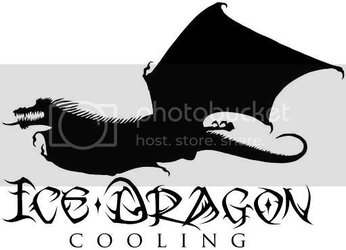
This is the start-up temperature profile of just the Alienware computer running the nanofluid. IceDragon1 is the nanofluid computer. I am only showing the inlet and outlet temperatures of the water block, but you can see what the temperatures of the inlet and outlet of the radiator were when I did the screen capture. They are in the chart to the right.
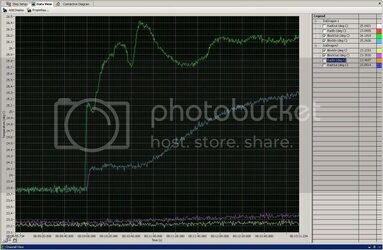
These are the temperatures of both computers at the logon screen:
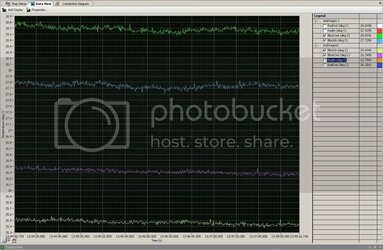
These are the temperatures during the start-up of Fluent. Fluent is a computational fluid program (CFD) that utilizes all the cores available - 4 in my case. The project that I am running is one of the nanofluid research projects. The fluent model had over 3 million cells. Each cell has its own system of equations (6 if I remember correctly). These are all solved simultaneously. So, it is so serious number crunching. I have 8 gigs of RAM in each system, and I believe 85% was used.
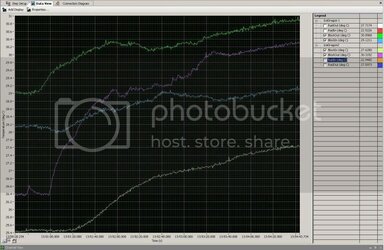
These are the temps at steady-state before I started iterating in Fluent. Boinc is also running in the background.
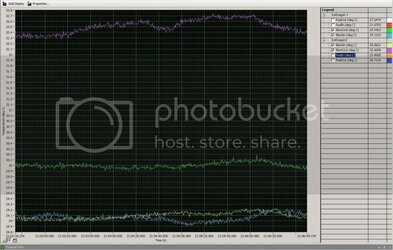
And, these are the steady-state temps while Fluent is running:
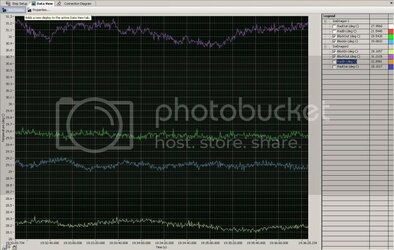
I will get some more photos up later.
Do let me know what you think of the logo.


